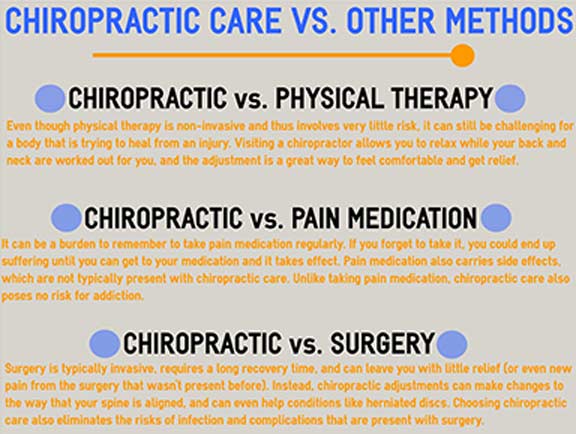The Relationship In Between Posture And Pain In The Back: Techniques For Maintaining Appropriate Placement Throughout The Day
The Relationship In Between Posture And Pain In The Back: Techniques For Maintaining Appropriate Placement Throughout The Day
Blog Article
Composed By-Ibrahim Mcgowan
Maintaining proper pose isn't practically sitting up directly; it's about aligning your body in a way that supports your spinal column and decreases the risk of neck and back pain. The way you rest, stand, and move throughout the day can considerably impact your spinal health and wellness. However just how specifically can you ensure good positioning constantly, also during busy days full of different tasks? Allow's dive deeper right into the refined yet impactful adjustments you can make to your daily routine to maintain your back satisfied and healthy and balanced.
Significance of Correct Posture
Appropriate posture is critical in keeping a healthy back and preventing pain. When you sit or stand with good position, your back remains in placement, decreasing strain on your muscle mass, tendons, and joints. This alignment enables the body to disperse weight equally, avoiding excessive anxiety on specific locations that can result in pain and pain. By maintaining your back appropriately aligned, you can additionally enhance your breathing and food digestion, as slouching can press organs and restrict their functionality.
In addition, keeping good position can improve your overall appearance and self-esteem. When you stand tall with your shoulders back and head held high, you exude confidence and appear more approachable. Good posture can also make you feel more energized and sharp, as it promotes correct blood circulation and enables your muscles to work effectively.
Including appropriate position into your daily routine, whether resting at a workdesk, strolling, or working out, is crucial for protecting against neck and back pain and advertising overall health. Remember, a small adjustment in just how you hold on your own can make a significant distinction in just how you feel and operate throughout the day.
Common Postural Mistakes
When it concerns maintaining great posture, many individuals unknowingly make typical mistakes that can contribute to back pain and discomfort. One of one of the most common errors is slouching or hunching over while resting or standing. This position puts extreme stress on the back and can lead to muscular tissue inequalities and discomfort over time.
An additional usual blunder is overarching the reduced back, which can flatten the natural curve of the spinal column and cause pain. In addition, crossing legs while resting might really feel comfortable, however it can produce an inequality in the hips and hips, bring about postural problems.
Using a cushion that's also soft or as well solid while sleeping can additionally affect your positioning and contribute to back pain. Finally, frequently craning your neck to check out screens or readjusting your position regularly can stress the neck and shoulders. Bearing in mind these typical postural errors can help you keep much better alignment and decrease the danger of pain in the back.
Tips for Correcting Alignment
To boost your placement and lower pain in the back, it's important to focus on making small changes throughout your day-to-day regimen. Start by being mindful of your posture. When sitting, guarantee your feet are level on the flooring, your back is straight, and your shoulders are kicked back. Stay clear of slouching or leaning to one side. Use see more or paddings to sustain your reduced back.
When standing, distribute your weight uniformly on both feet, maintain your knees somewhat bent, and embed your pelvis. Involve your core muscle mass to support your spine. Take breaks to extend and walk around if you have a less active task. Integrate workouts that strengthen your core and back muscle mass, such as planks or bridges.
While resting, make use of a cushion that supports the all-natural contour of your neck to keep correct back placement. Prevent sleeping on your tummy, as it can stress your neck and back. By being mindful of these suggestions and making small changes, you can slowly correct your positioning and relieve pain in the back.
Verdict
Keep in mind, keeping good posture is essential to stop pain in the back and promoting spinal wellness. By bearing in go here , dispersing weight uniformly, and engaging your core muscles, you can decrease stress on your back and minimize the risk of pain and injury. Integrate ergonomic assistance, take regular breaks to extend, and reinforce your core and back muscle mass to keep proper alignment throughout the day. Your back will certainly thanks for it!
